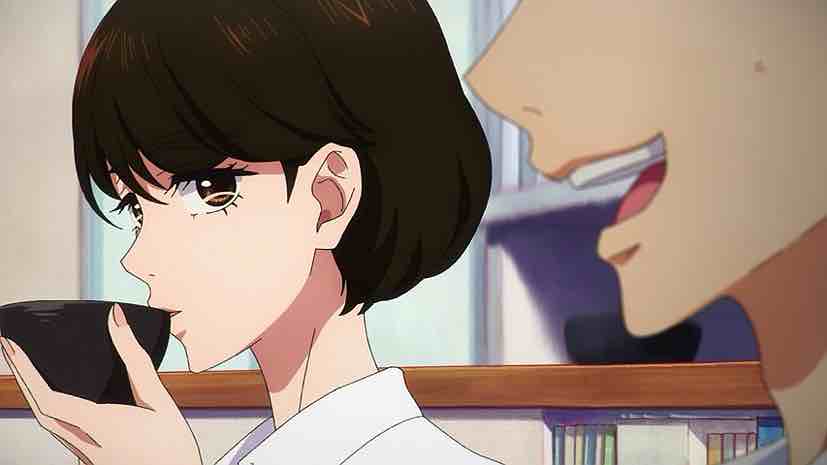 And now, the floodgates open. By a weird (and cruel) twist of scheduling almost everything from my lowest expectations tier already premiered before this weekend, and almost everything in the top two hits in the next two days (though Shikimori-san’s premiere may be delayed because of a Covid outbreak at Doga Kobo). We start the ramp-up with the “Mid-table” Dance Dance Danseur (though Tiger & Bunny 2 not just premiered but concluded, I have to go through the usual mental gymnastics trying to figure out how to handle a Netflix dump). It’s not among my top picks of the season, but this adaptation of Asakura George’s manga certainly casts a bigger shadow than anything that’s premiered so far.
And now, the floodgates open. By a weird (and cruel) twist of scheduling almost everything from my lowest expectations tier already premiered before this weekend, and almost everything in the top two hits in the next two days (though Shikimori-san’s premiere may be delayed because of a Covid outbreak at Doga Kobo). We start the ramp-up with the “Mid-table” Dance Dance Danseur (though Tiger & Bunny 2 not just premiered but concluded, I have to go through the usual mental gymnastics trying to figure out how to handle a Netflix dump). It’s not among my top picks of the season, but this adaptation of Asakura George’s manga certainly casts a bigger shadow than anything that’s premiered so far.
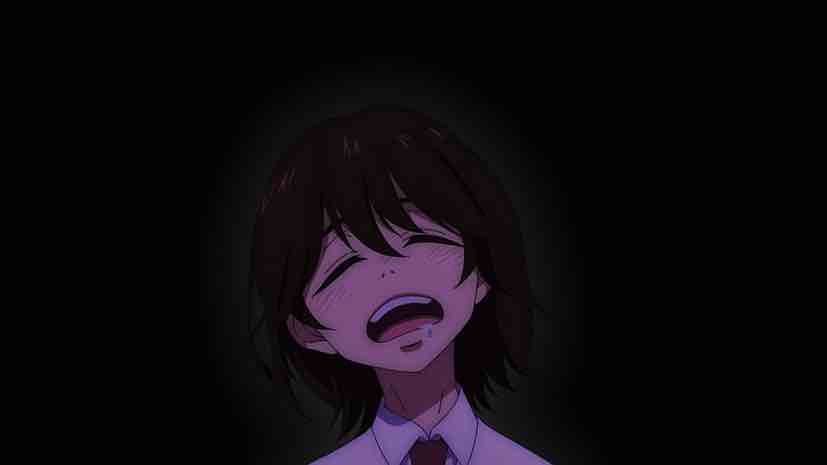 Given that, it should have been the best premiere to date. And it was, as far as I’m concerned. This was very, very good. And both narratively and visually too, which is important in light of the usual MAPPA roulette. For one week at least the good version of the “black studio” seems to have shown up. While the character designs (especially the eyes) and coloring are shoujo on steroids, the overall look is still striking. And crucially, the dance and martial arts scenes are well-drawn and choreographed, with minimal CGI. Whether that will continue is obviously an open question, but so far, so good.
Given that, it should have been the best premiere to date. And it was, as far as I’m concerned. This was very, very good. And both narratively and visually too, which is important in light of the usual MAPPA roulette. For one week at least the good version of the “black studio” seems to have shown up. While the character designs (especially the eyes) and coloring are shoujo on steroids, the overall look is still striking. And crucially, the dance and martial arts scenes are well-drawn and choreographed, with minimal CGI. Whether that will continue is obviously an open question, but so far, so good.
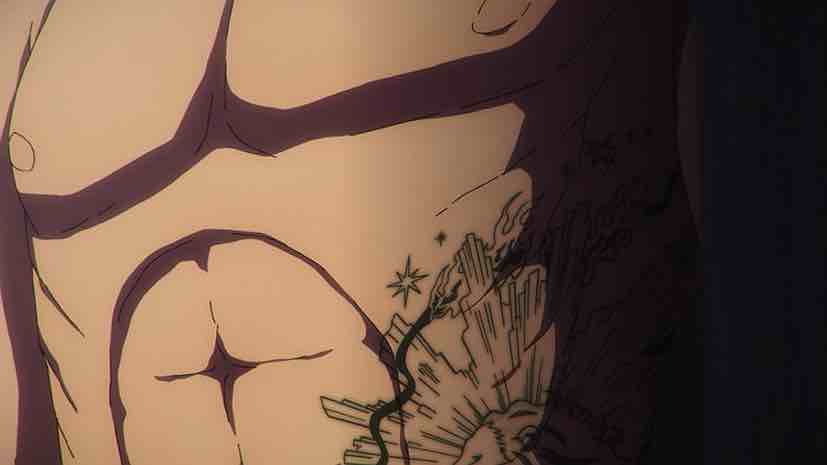 I don’t know anything about Asakura’s work in the sense of having read it, but I know she has a reputation as a pretty quirky mangaka, with some magical realism elements in some of her work. I also know that despite the designs here she’s not rigidly shoujo by demographic – as many shoujo mangaka do she ventures into jousei and even seinen. And Dance Dance Danseur falls under that latter umbrella, published in the seinen Big Comic Spirits. I’m of the view that demographic labels are generally overemphasized, but they can give hints about where an author wants to take a story.
I don’t know anything about Asakura’s work in the sense of having read it, but I know she has a reputation as a pretty quirky mangaka, with some magical realism elements in some of her work. I also know that despite the designs here she’s not rigidly shoujo by demographic – as many shoujo mangaka do she ventures into jousei and even seinen. And Dance Dance Danseur falls under that latter umbrella, published in the seinen Big Comic Spirits. I’m of the view that demographic labels are generally overemphasized, but they can give hints about where an author wants to take a story.
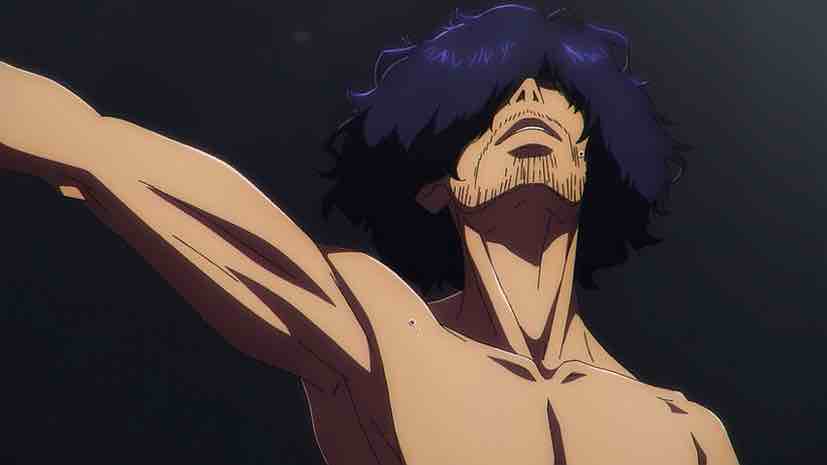 Funnily enough, my first reaction to this premiere was amazement that somehow Hanae Natsuki didn’t get cast as the lead (and then relief). In fact it’s the much better Yamashita Daiki who plays hero Murao Junpei. He’s a 2nd-year middle schooler who was entranced as a child by a tattooed danseur doing Don Quixote, and decided to take up ballet. His father, a stunt coordinator, initially pushes back, urging Junpei to take up something more “manly”. But when he sees the fire in his son’s eyes, he relents. Unfortunately Junpei begins to feel the powerful influence of peer pressure almost immediately and eventually throws over ballet for Jeet Kune Do – the (somewhat balletic) martial art based on the work of Bruce Lee.
Funnily enough, my first reaction to this premiere was amazement that somehow Hanae Natsuki didn’t get cast as the lead (and then relief). In fact it’s the much better Yamashita Daiki who plays hero Murao Junpei. He’s a 2nd-year middle schooler who was entranced as a child by a tattooed danseur doing Don Quixote, and decided to take up ballet. His father, a stunt coordinator, initially pushes back, urging Junpei to take up something more “manly”. But when he sees the fire in his son’s eyes, he relents. Unfortunately Junpei begins to feel the powerful influence of peer pressure almost immediately and eventually throws over ballet for Jeet Kune Do – the (somewhat balletic) martial art based on the work of Bruce Lee.
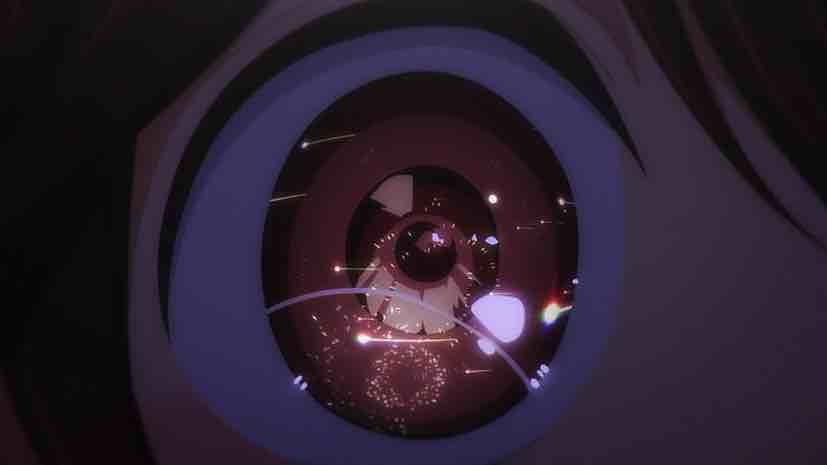 Let me say, first of all, that scene between Junpei and his dad was superbly handled. We see the quality of the man in relenting to the obvious joy his son felt, but not before he’d planted a seed in his mind. For me the best and most interesting part of this premiere (and it won’t surprise me if it’s the entire series) is the way it explores peer pressure. Never, never underestimate the impact of peer pressure in the life of a child – the weight of it can be unimaginable. IMHO it applies equally to girls and boys, obviously in different forms. For boys, we’re pushed to be manly and tough and cool from a very early age. I never had the desire (or talent) to do ballet, but I can’t imagine I would have had the courage to face the social stigma if I had – and neither would most boys. I’m just being honest about that.
Let me say, first of all, that scene between Junpei and his dad was superbly handled. We see the quality of the man in relenting to the obvious joy his son felt, but not before he’d planted a seed in his mind. For me the best and most interesting part of this premiere (and it won’t surprise me if it’s the entire series) is the way it explores peer pressure. Never, never underestimate the impact of peer pressure in the life of a child – the weight of it can be unimaginable. IMHO it applies equally to girls and boys, obviously in different forms. For boys, we’re pushed to be manly and tough and cool from a very early age. I never had the desire (or talent) to do ballet, but I can’t imagine I would have had the courage to face the social stigma if I had – and neither would most boys. I’m just being honest about that.
 For a boy, dance generally but ballet specifically is one of the most troublesome pursuits when it comes to being called “girly” (or worse). We saw this explored in Billy Elliot of course (along with the issue of sexuality, which may or may not be part of this series). After his father’s death Junpei reverts to Jeet Kune Do at his uncle’s dojo and plays soccer, but his heart is lost to ballet. He’s a natural athlete and these pursuits give him some satisfaction, but they don’t thrill him the way he wants to be thrilled. His conduit back into ballet is his classmate Godai Miyako (Hondo Kaede), who trains at the new studio opened by her mother. She sees Junepi perform a ballet move (a “540”) under the guise of executing a “flying kick” and puts the pieces together.
For a boy, dance generally but ballet specifically is one of the most troublesome pursuits when it comes to being called “girly” (or worse). We saw this explored in Billy Elliot of course (along with the issue of sexuality, which may or may not be part of this series). After his father’s death Junpei reverts to Jeet Kune Do at his uncle’s dojo and plays soccer, but his heart is lost to ballet. He’s a natural athlete and these pursuits give him some satisfaction, but they don’t thrill him the way he wants to be thrilled. His conduit back into ballet is his classmate Godai Miyako (Hondo Kaede), who trains at the new studio opened by her mother. She sees Junepi perform a ballet move (a “540”) under the guise of executing a “flying kick” and puts the pieces together.
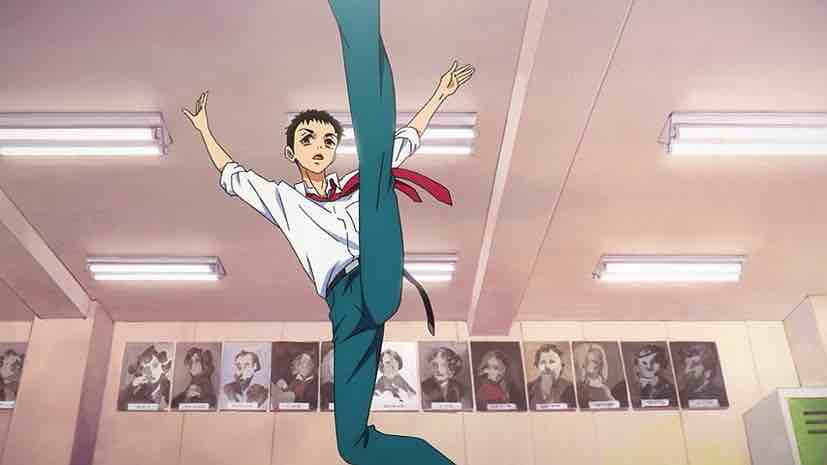 This relationship is obviously going to be an important one, and there’s a nice spark of authenticity to their interactions in the premiere. Junpei is convinced Miyako is into him (and he’s definitely into her), but it seems like she’s just genuinely desperate to find a male partner for the upcoming recital (and indeed, finding danseur candidates is a huge challenge for ballet schools). Junpei starts coming to the mom’s lessons because he loves ballet like nothing else – and he clearly is a natural – but huge challenges remain. Not just the peer pressure he’s desperate to avoid, but the reality that if he wants to be a serious danseur (as is the case with most arts) he has to give up a “normal” life which includes his boy pursuits Jeet Kune Do and soccer.
This relationship is obviously going to be an important one, and there’s a nice spark of authenticity to their interactions in the premiere. Junpei is convinced Miyako is into him (and he’s definitely into her), but it seems like she’s just genuinely desperate to find a male partner for the upcoming recital (and indeed, finding danseur candidates is a huge challenge for ballet schools). Junpei starts coming to the mom’s lessons because he loves ballet like nothing else – and he clearly is a natural – but huge challenges remain. Not just the peer pressure he’s desperate to avoid, but the reality that if he wants to be a serious danseur (as is the case with most arts) he has to give up a “normal” life which includes his boy pursuits Jeet Kune Do and soccer.
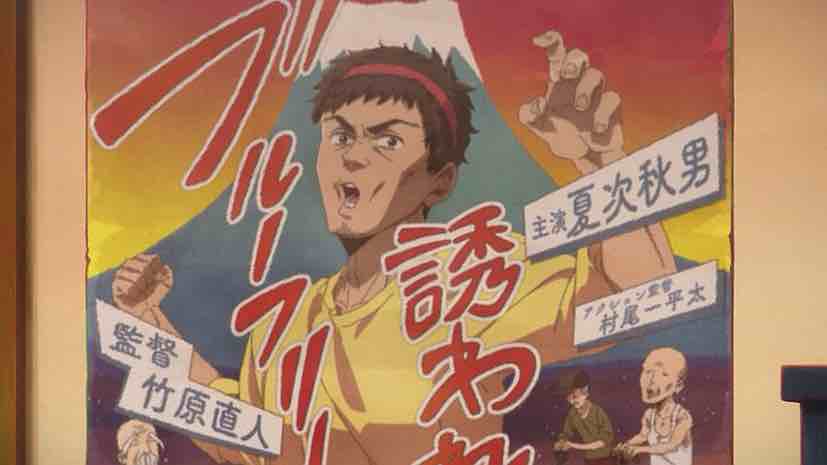 There are definitely hints of Asakura weirdness here – like the boy in the closed room at the Godai house who’s clearly a dancer himself (if he Miyako’s brother, or a relative?). But a little quirkiness can be a good thing in veering away from formula cliche, and on balance I thought this was a really good premiere. It deals with some fascinating social issues with defy easy answers and seems to do so with sensitivity and intelligence (so far). I liked Junpei and Miyako both separately and together and as noted, the dancing sequences are excellent. There are perhaps more than average reasons to be concerned about things going off the rails on multiple fronts, but I can only judge what I have before me – and this was really interesting and well-done.
There are definitely hints of Asakura weirdness here – like the boy in the closed room at the Godai house who’s clearly a dancer himself (if he Miyako’s brother, or a relative?). But a little quirkiness can be a good thing in veering away from formula cliche, and on balance I thought this was a really good premiere. It deals with some fascinating social issues with defy easy answers and seems to do so with sensitivity and intelligence (so far). I liked Junpei and Miyako both separately and together and as noted, the dancing sequences are excellent. There are perhaps more than average reasons to be concerned about things going off the rails on multiple fronts, but I can only judge what I have before me – and this was really interesting and well-done.


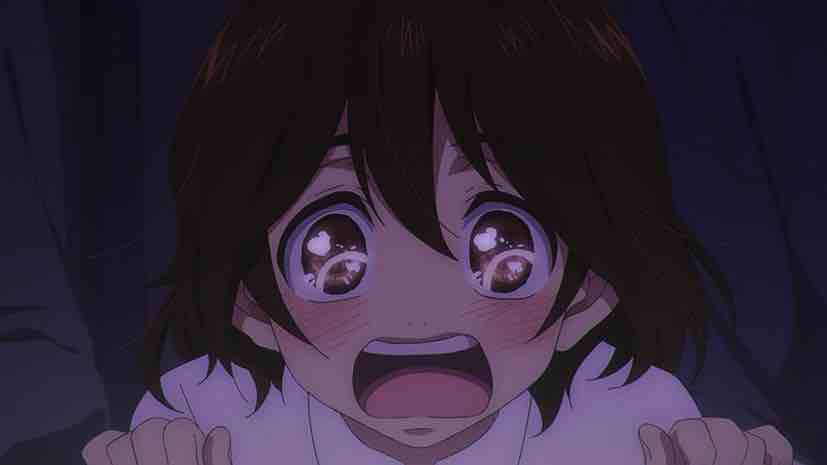
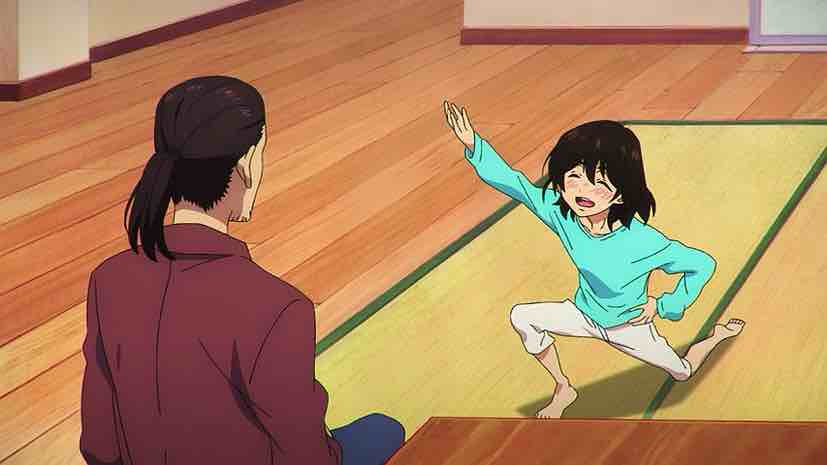
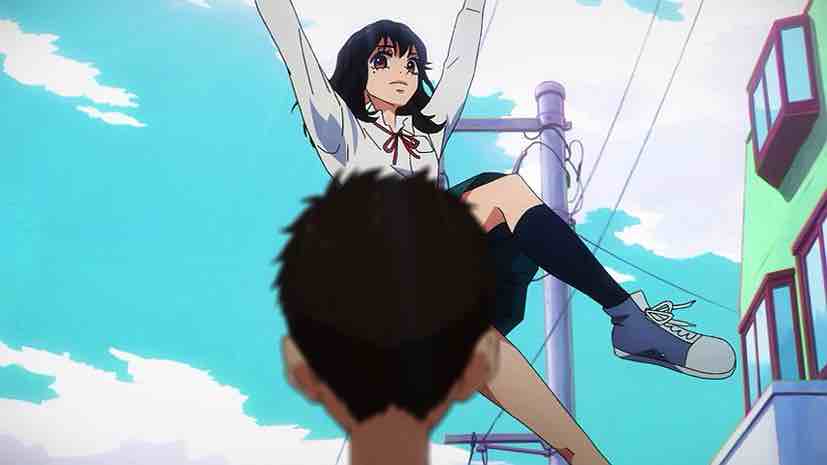

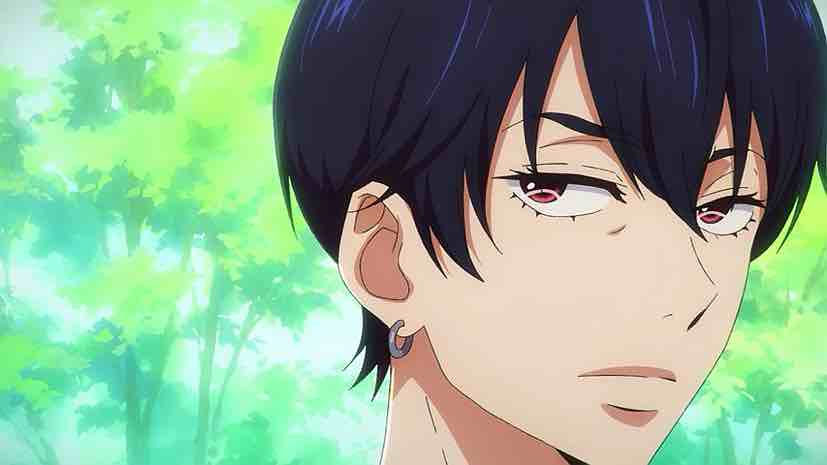
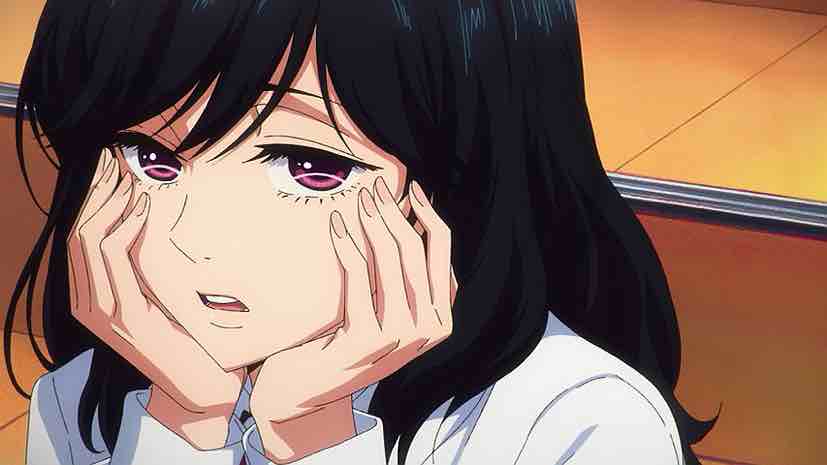
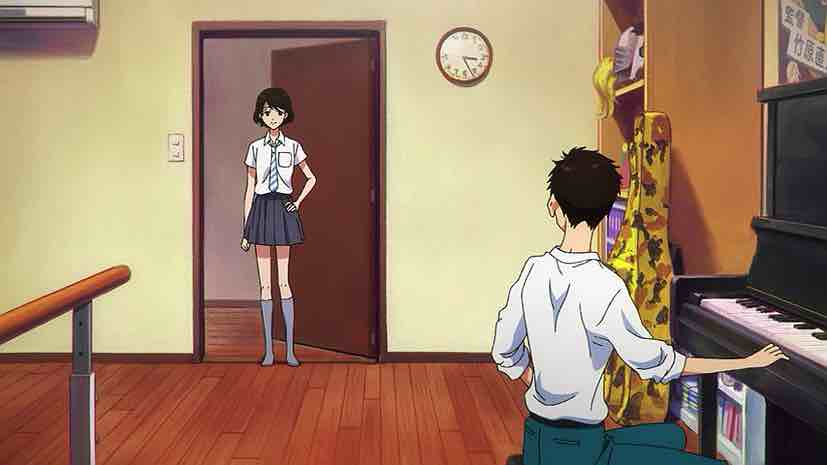
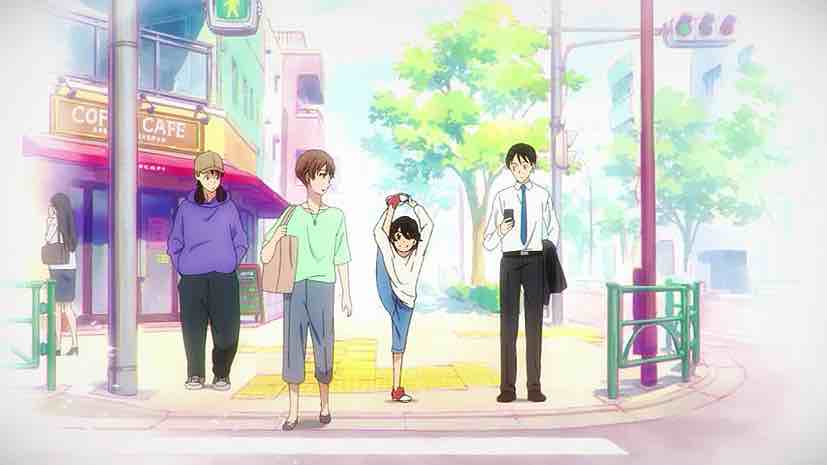
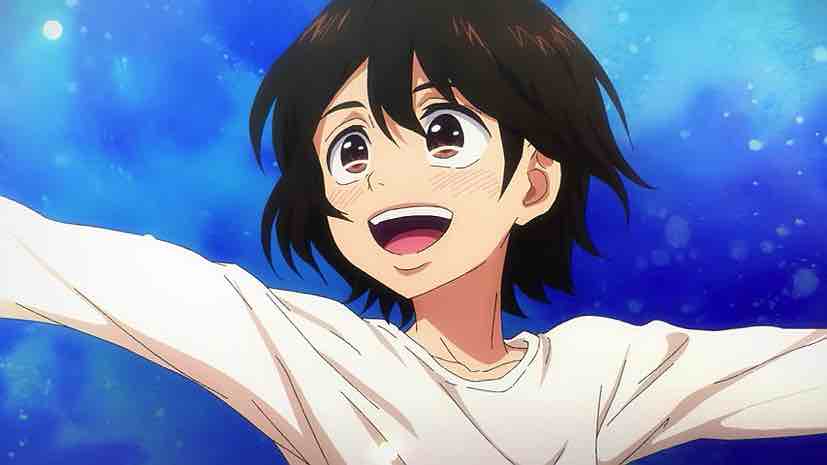
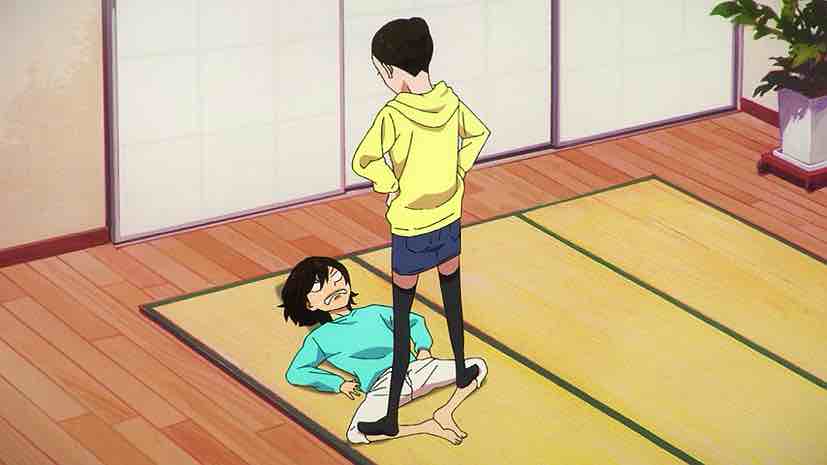
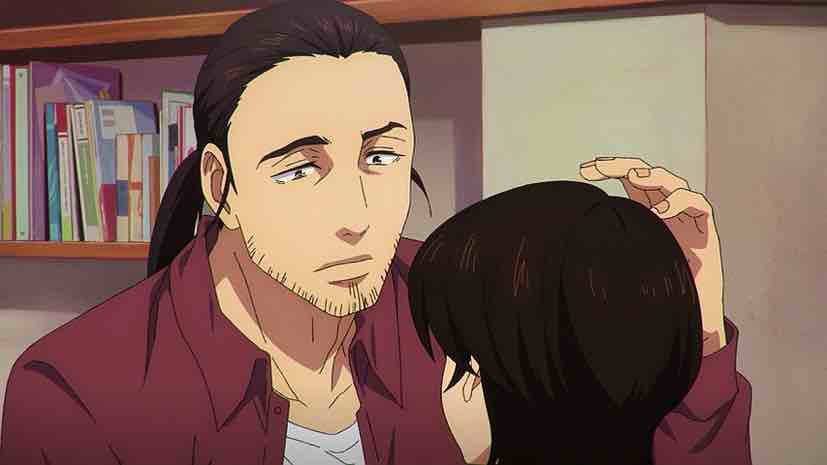

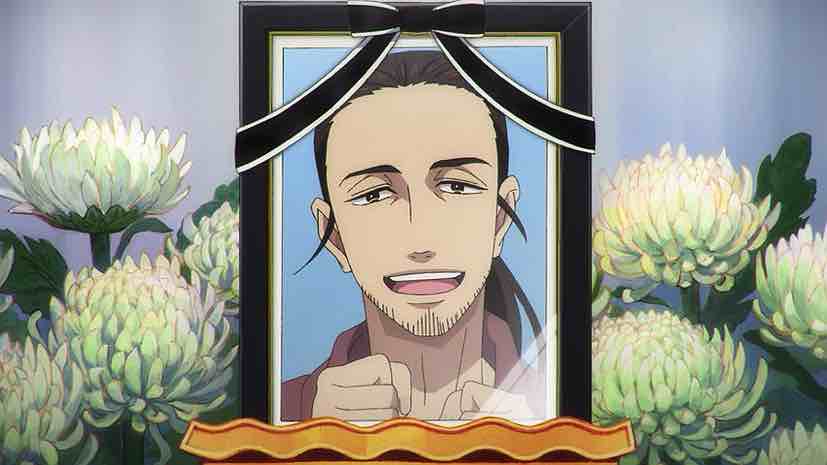
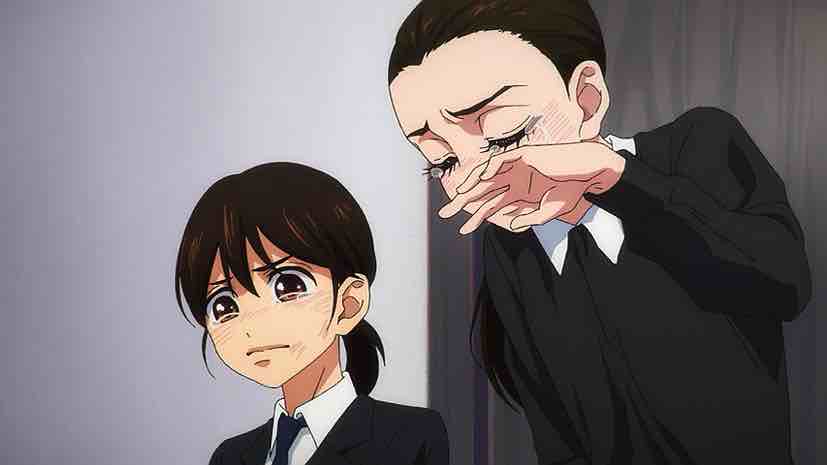
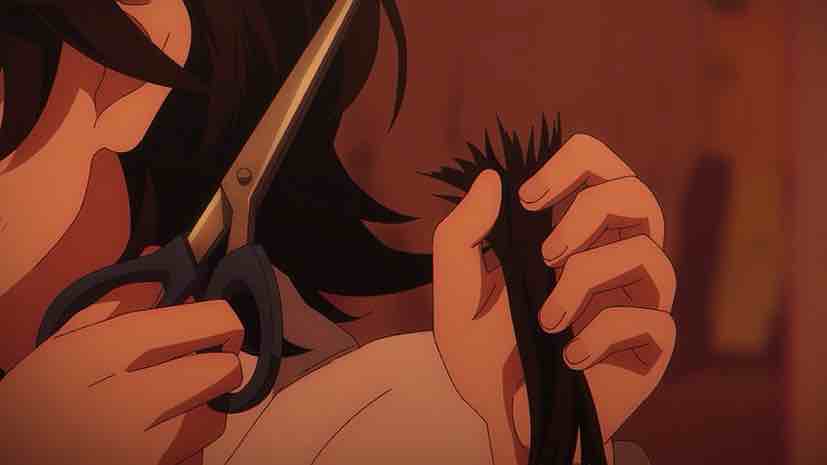
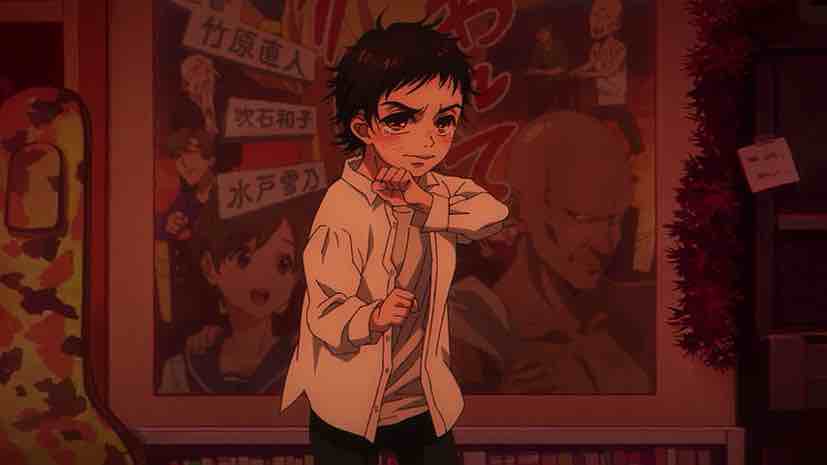
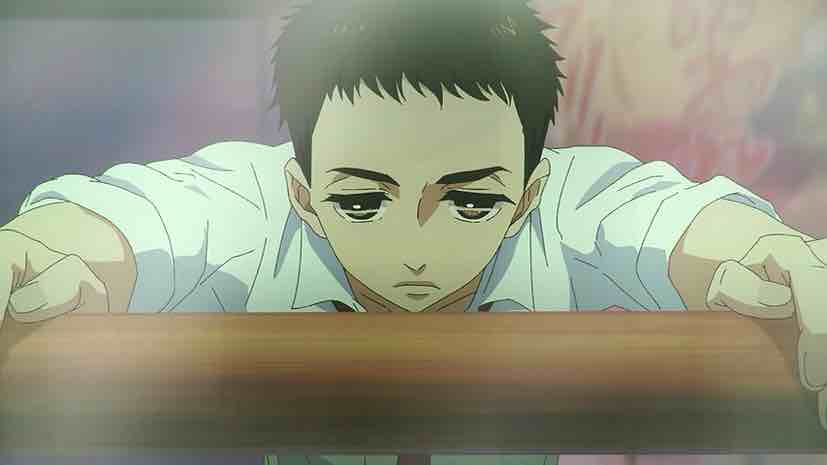
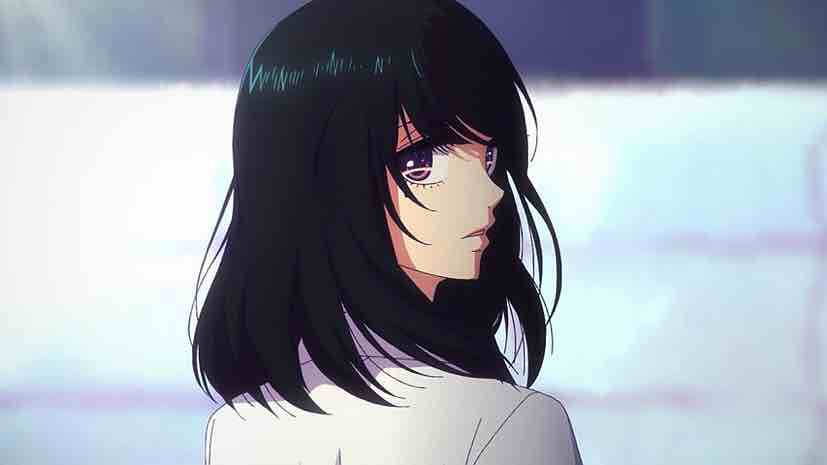

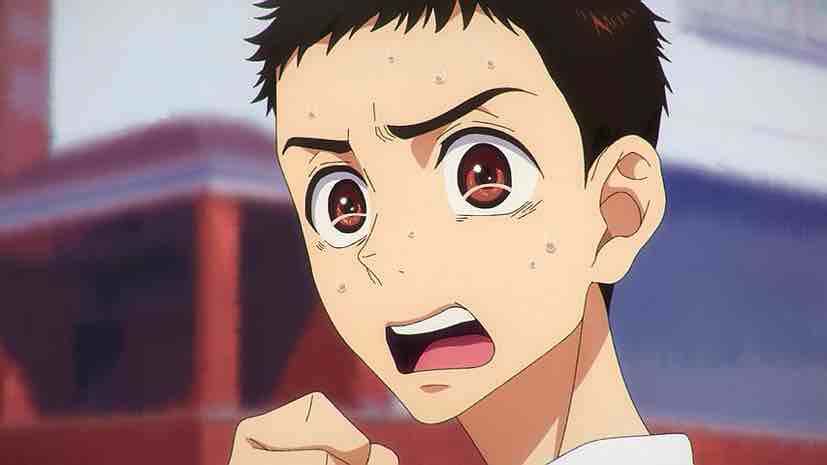
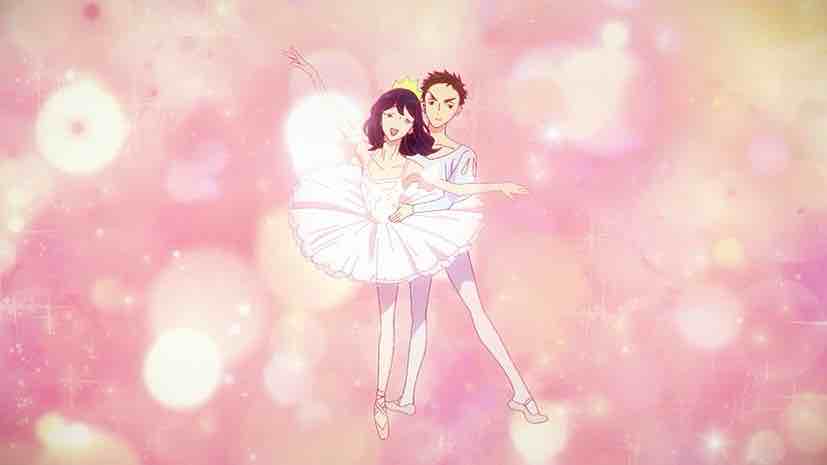
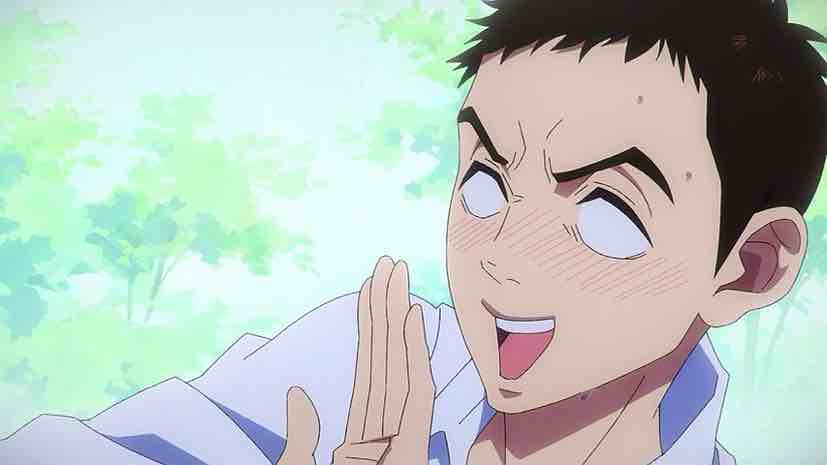
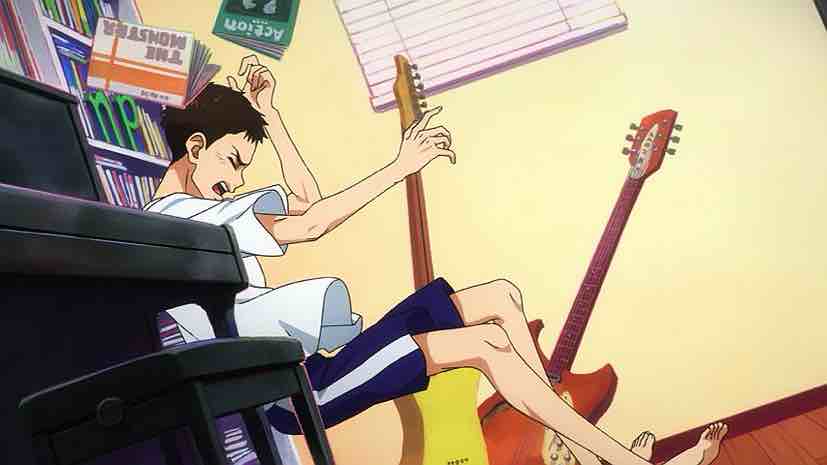
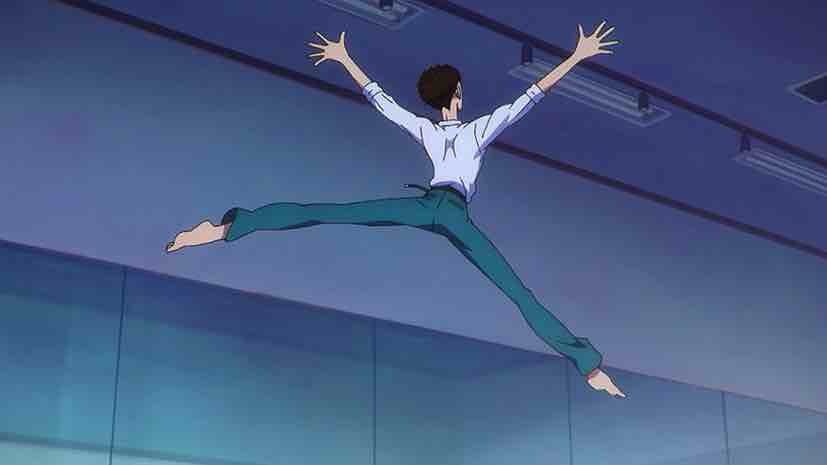
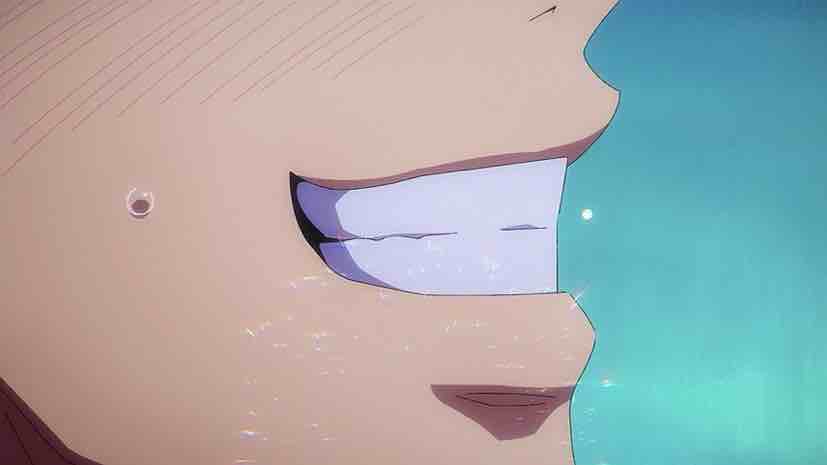
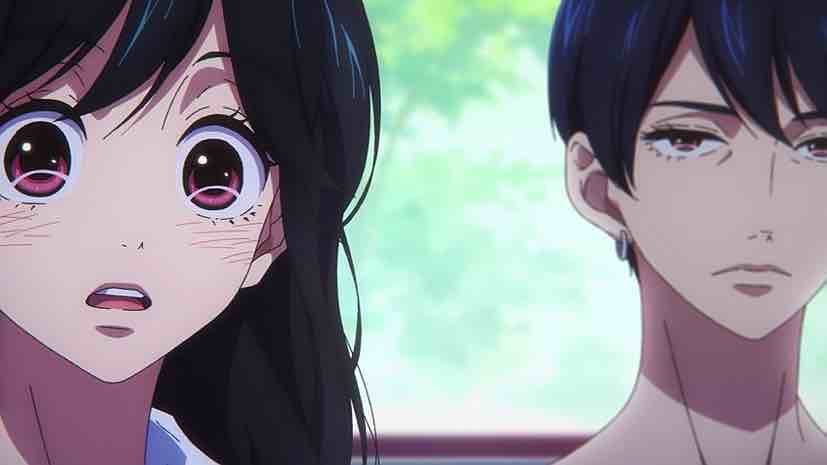
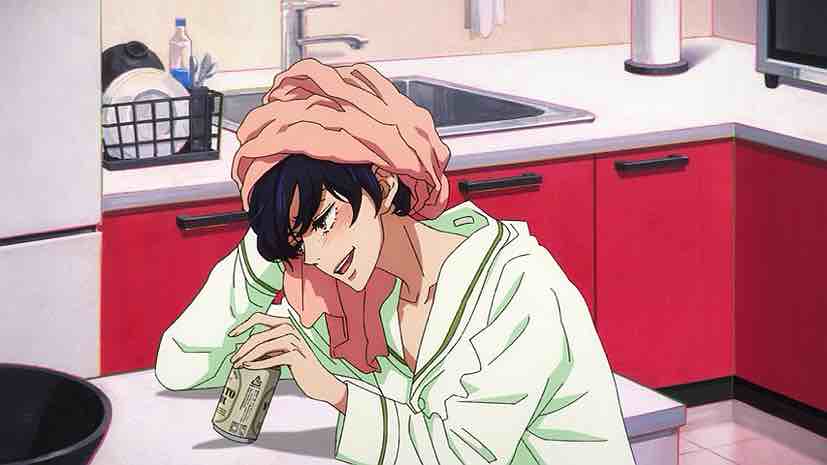
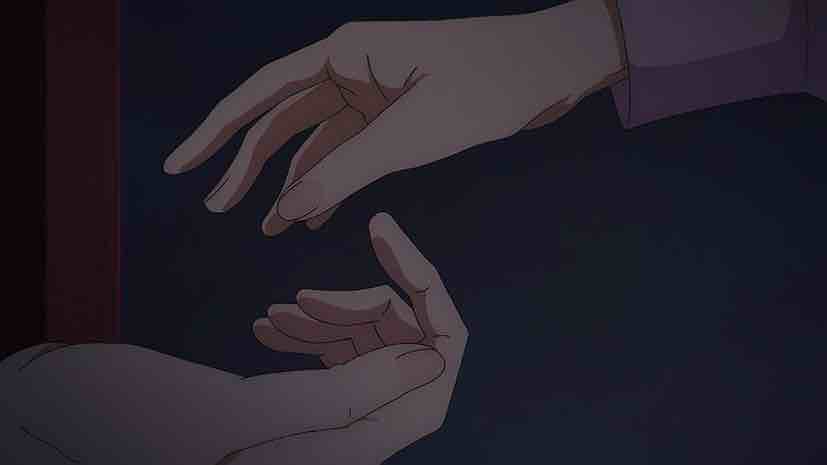
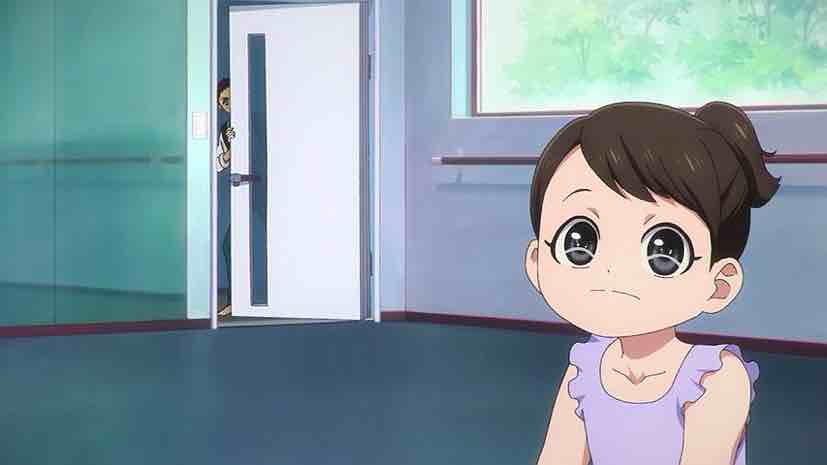
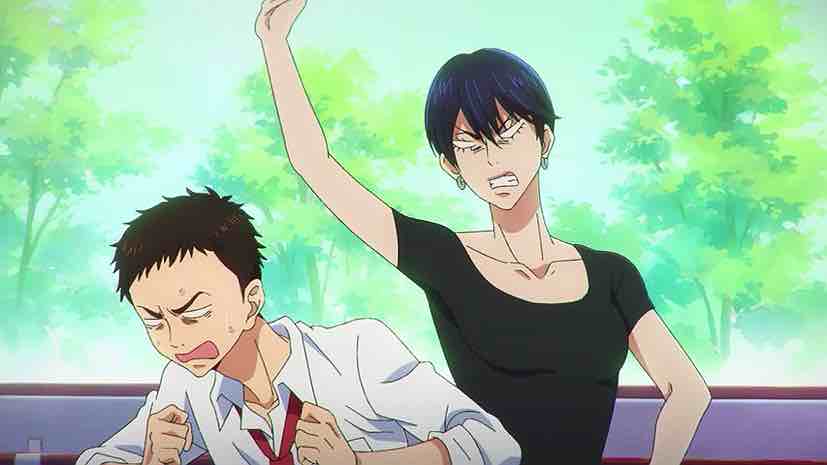
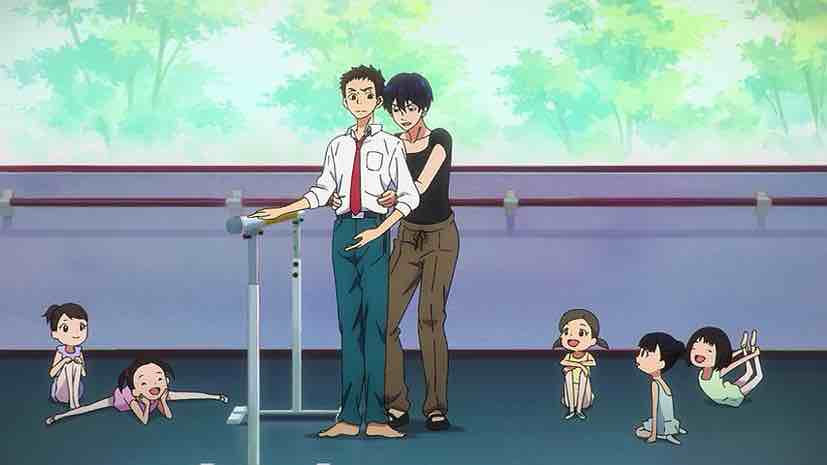
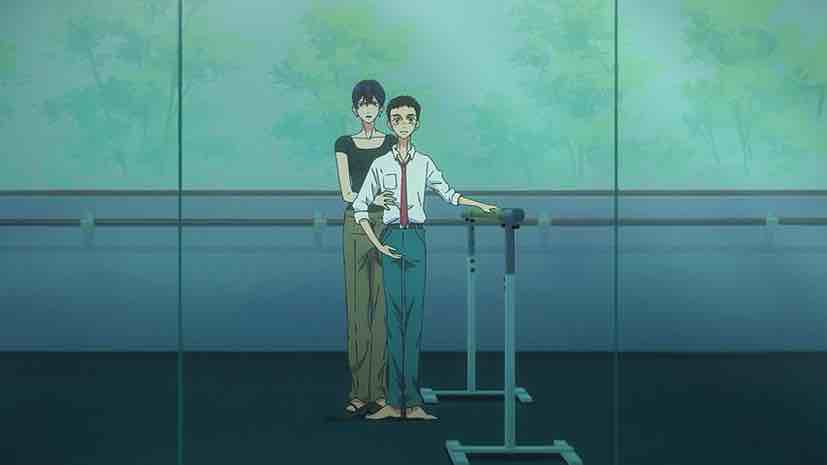
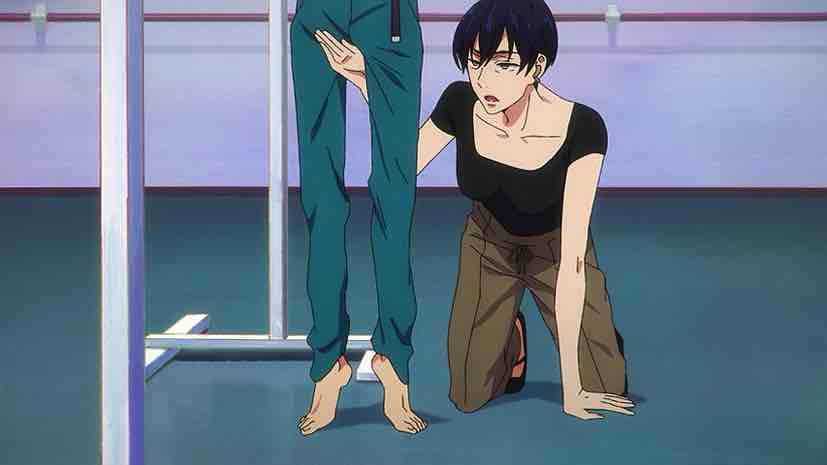
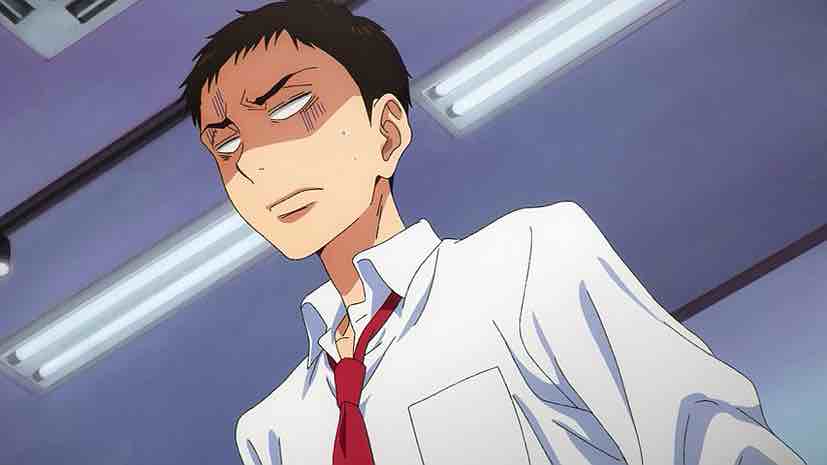
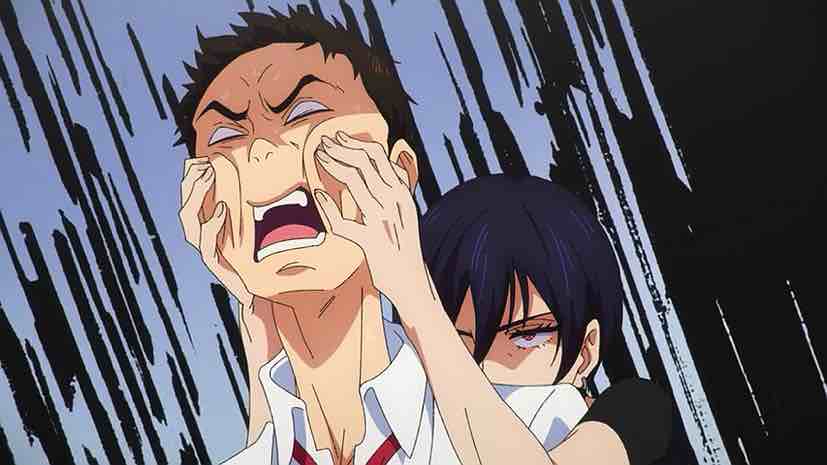
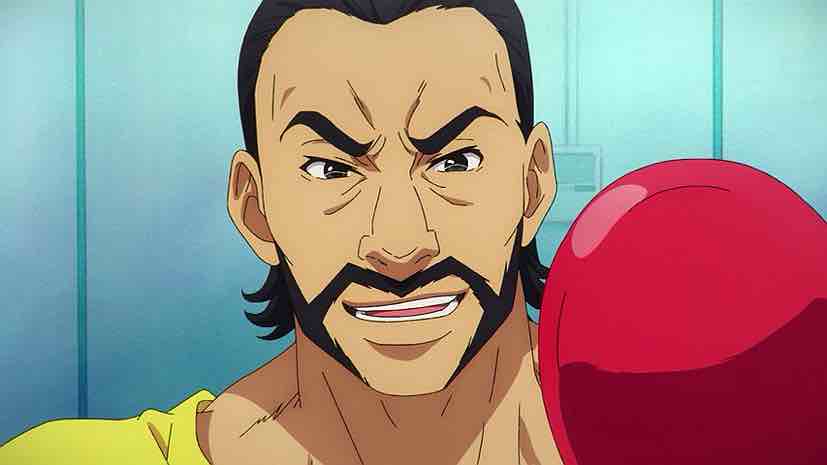
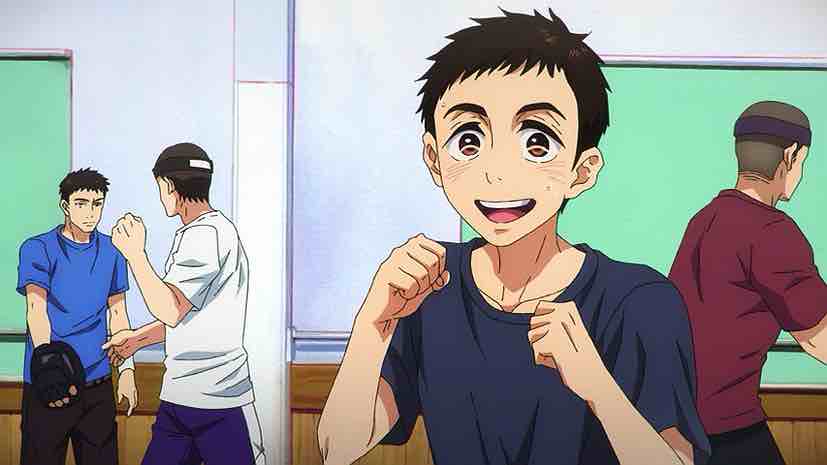
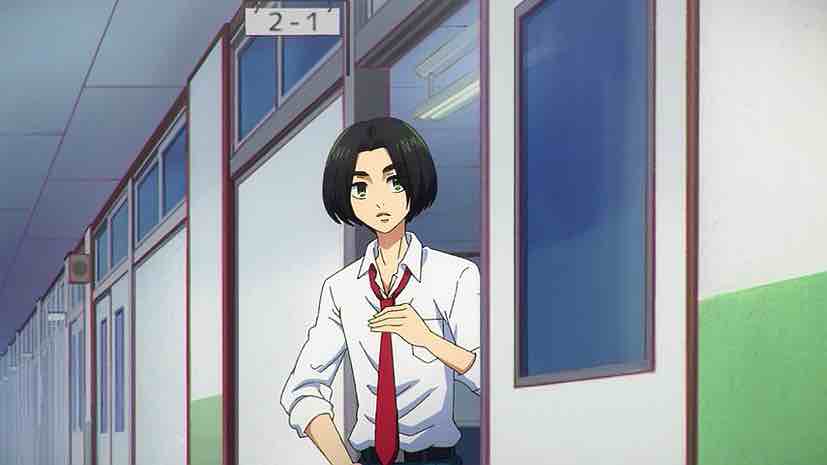

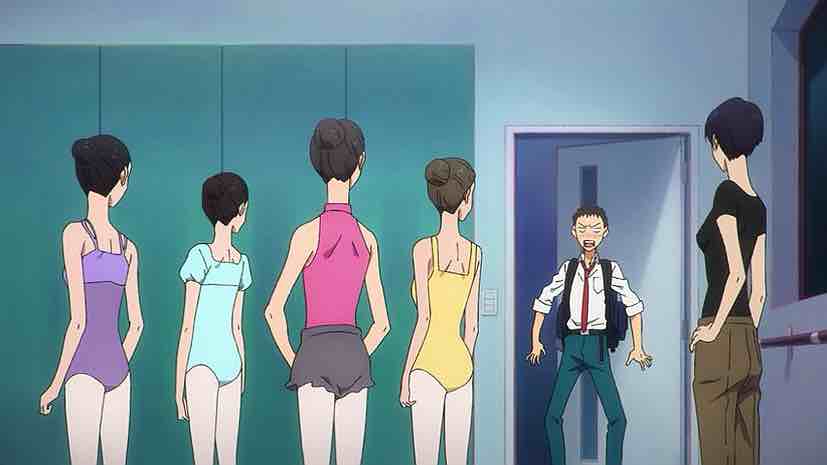
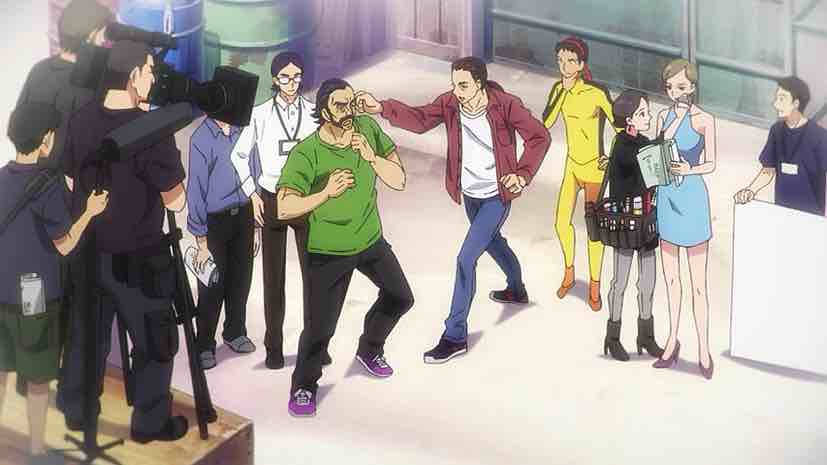
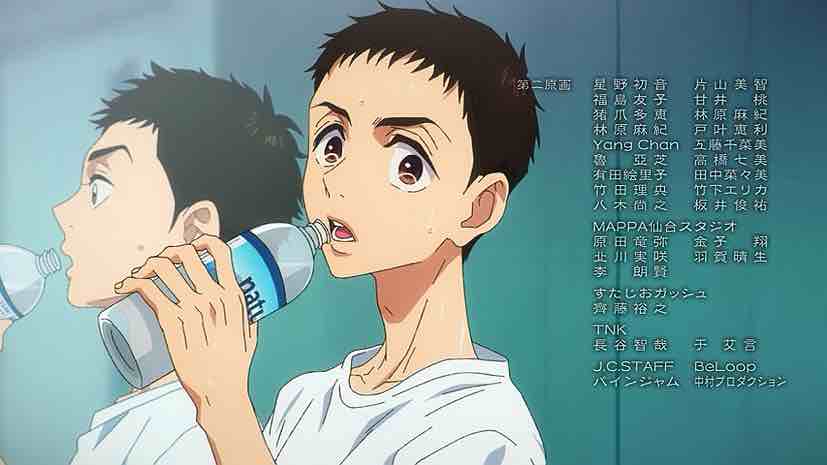

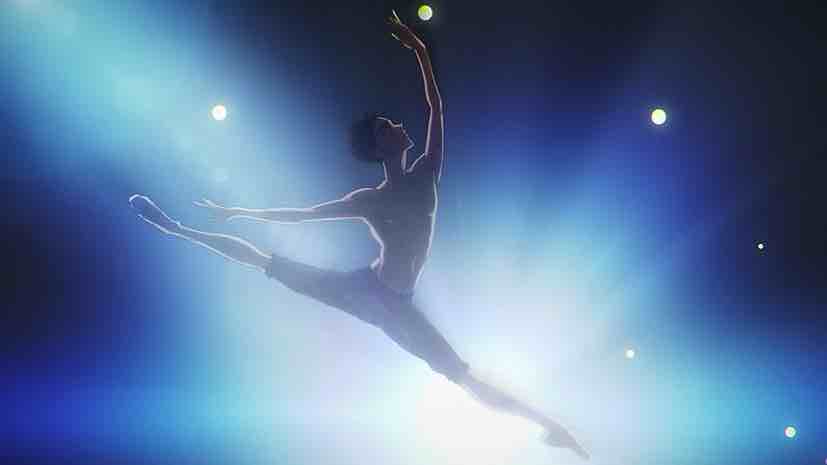


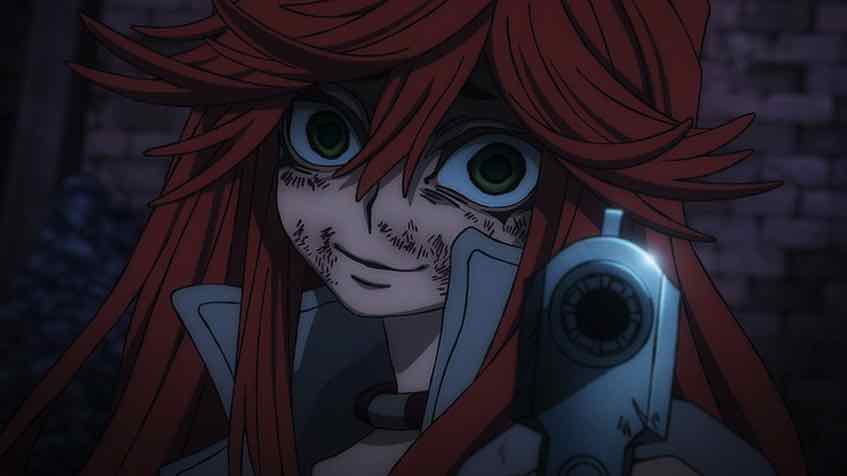
Aozora
April 9, 2022 at 5:15 pmWow, that was great. I did expect (hope) that it could be an experience like Yuri on Ice and it seems like it could indeed be. And I got the feeling that the tattooed danseur doing Don Quixote might also be named Godai … (I did not read the manga).
Guardian Enzo
April 9, 2022 at 5:36 pmWell, that thought never even crossed my mind, but it’d certainly be quite the twist.
Aozora
April 10, 2022 at 6:10 pmWell, I just thought the hair colour was quite similar. And than there is the absence of a father in this family of ballet dancers.
Collectr
April 9, 2022 at 9:37 pmYeah, Billy Elliott came to mind while watching this premiere, as did parts of A Chorus Line – not bad reference points for an anime. The character designs are reminiscent of Ballroom e Youkoso (those long, thin necks!), with the addition of the half-circles in the eyes. A bit strange – it made me think that everyone was wearing contacts that had slipped.
The boy in the closed room is[DELETED], according to Crunchyroll. Beyond that… only 8 chapters have been scanlated into English, apparently.
This is the first show of Spring that doesn’t seem to be straight off the assembly line.
Guardian Enzo
April 9, 2022 at 10:24 pmWell you know, that was kind of a spoiler.
Yes, it’s not a mass-produced model. Was certainly my premiere of the season until 30 minutes ago.
leongsh
April 9, 2022 at 11:14 pmNope. English scanlated chapters reach until Chapter 51. That was a very recent effort. I am following the series chapters as and when they are released, the latest being Chapter 201.
Collectr
April 9, 2022 at 11:43 pmThanks! mangaupdates only listed 8; they don’t track “no group” translations, I guess. Now forging ahead…